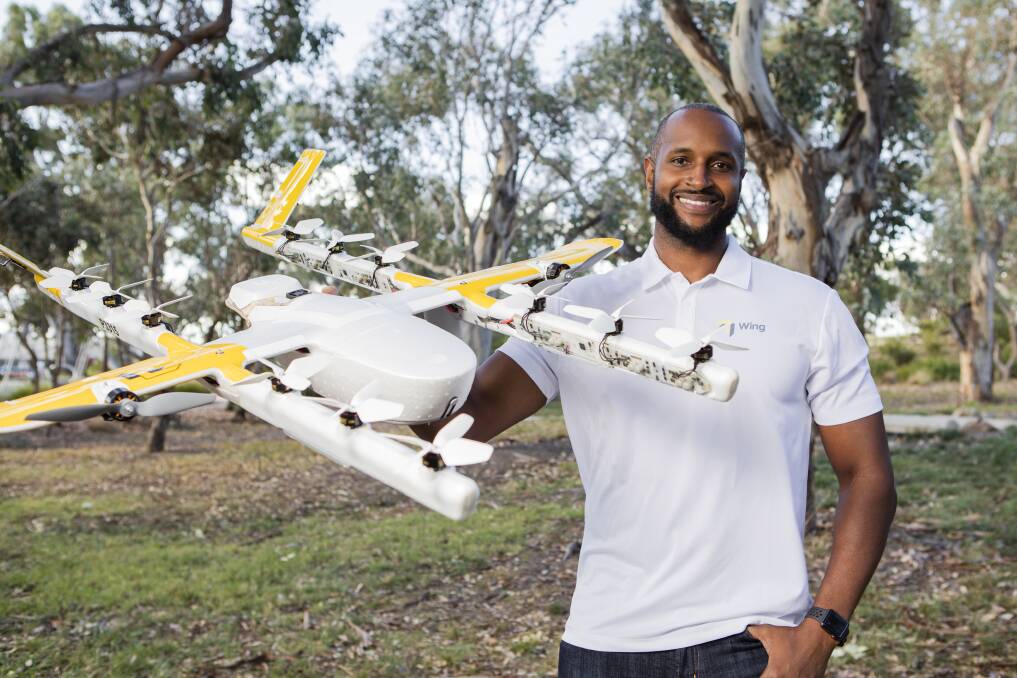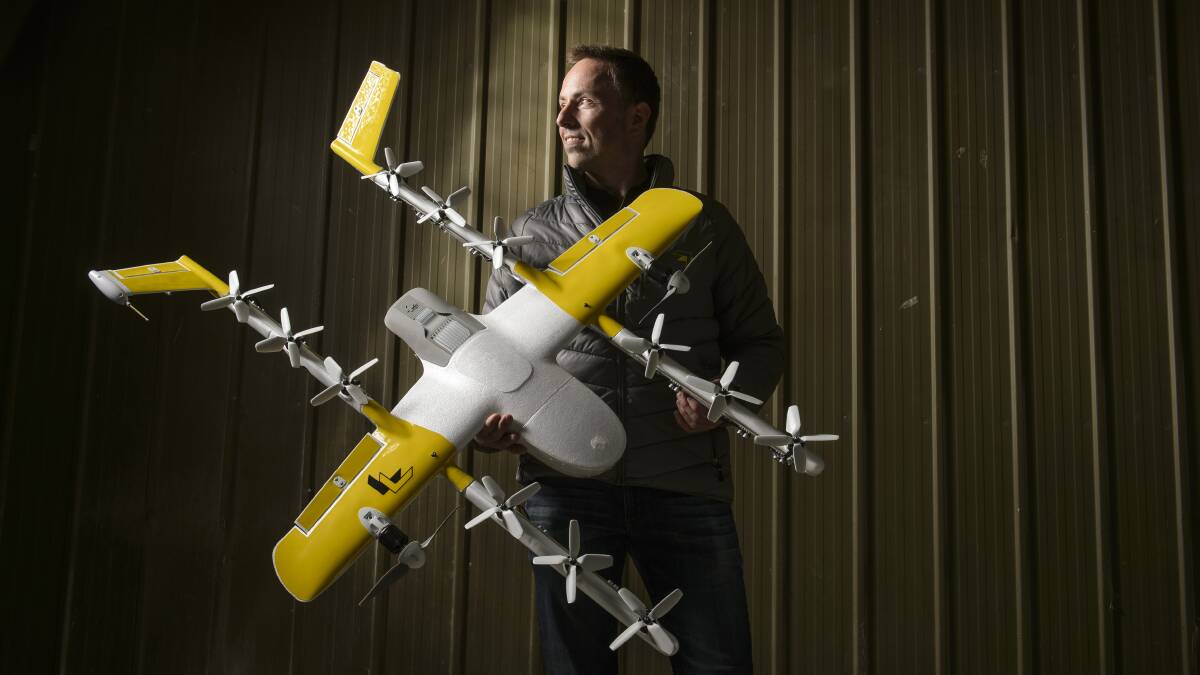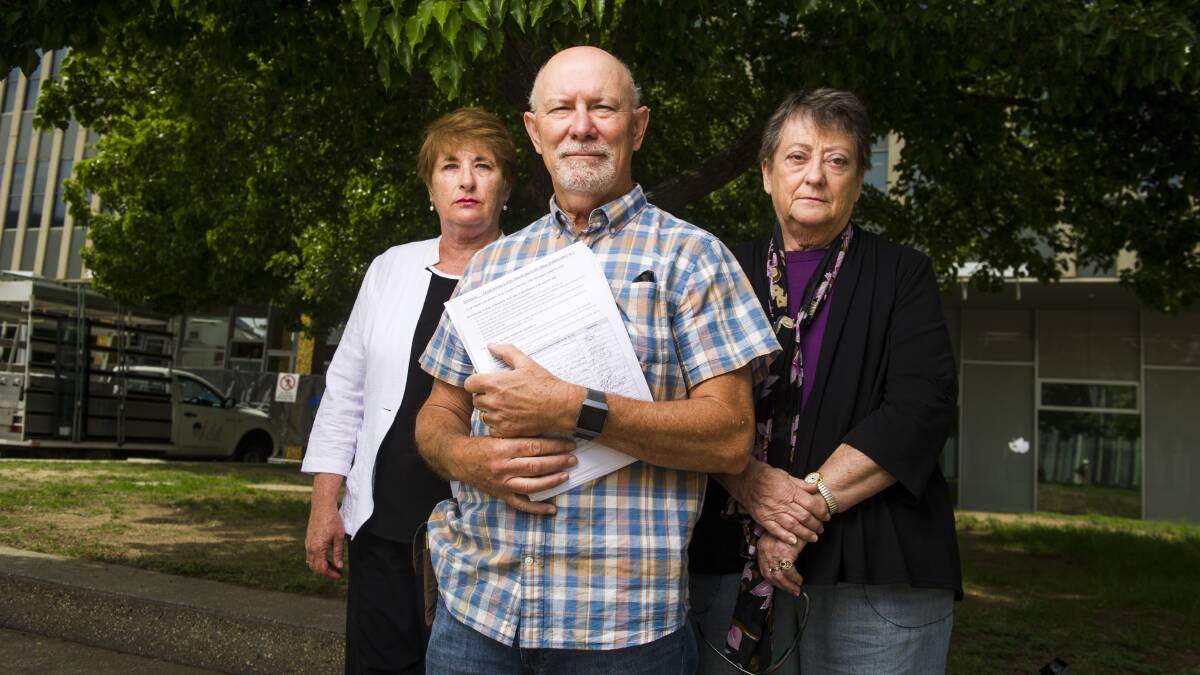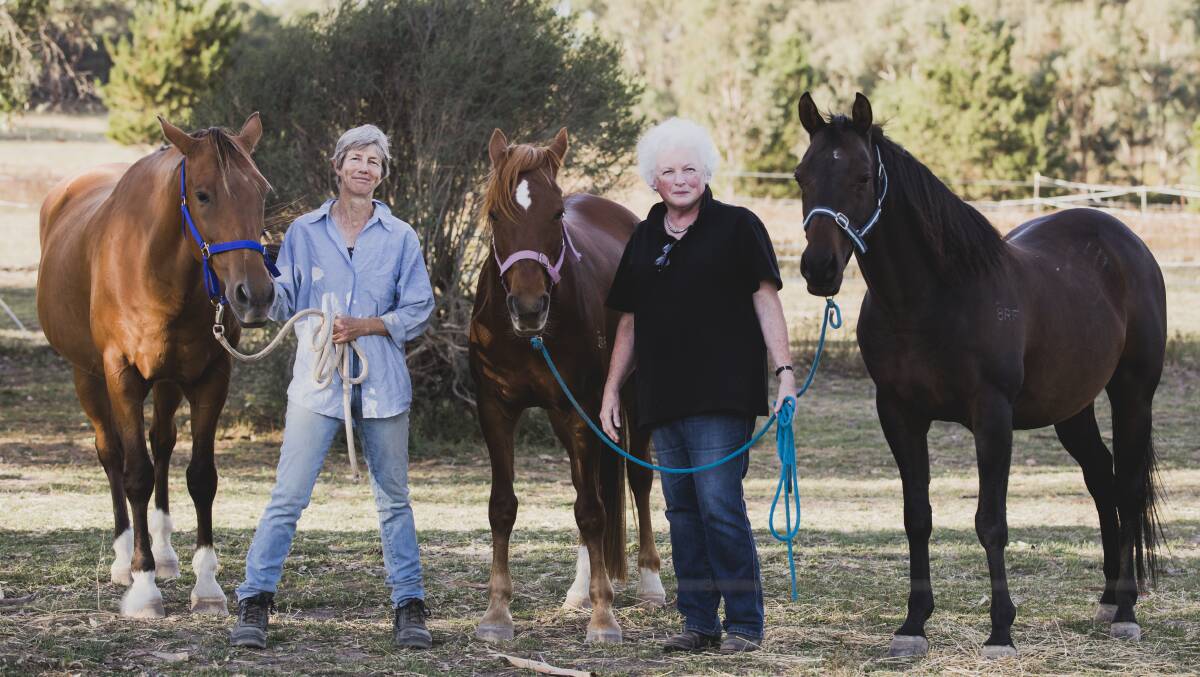Drones buzzing through the skies, delivering burritos, hot coffee, tools and medical supplies to the driveways of suburban homes.
Subscribe now for unlimited access.
$0/
(min cost $0)
or signup to continue reading
It's a concept that could so easily be laughed off as a Jetson-esque flight of fancy - if it wasn't already a reality. And a reality here, in Canberra.
The future has arrived early in the national capital. It's arrived quickly and loudly, too.
Tech company Wing this week gave the green light to launch a world-first permanent household drone delivery operation in Canberra's north. Deliveries will first be offered to 100 homes in Crace, Palmerston and Franklin, before the service is expanded to Gungahlin and Harrison in the coming months.

By 2030, Wing estimates there could be 11,000 drone deliveries each day in the ACT.
It's an ambitious projection for a company which has navigated turbulent skies since it took off in Australia.
Wing's trials across the Canberra region have sparked a political and community backlash, and exposed significant regulatory gaps which call into question the ACT's readiness to accommodate the innovation.
And yet, through dark clouds of criticism and controversy, the company's ultimate ambition - to fundamentally transform how products are delivered - never wavered.
This week's milestone means drones are here to stay. That much is clear.
Far less certain is whether the community wants them, and whether the authorities are ready to regulate them.
From California to Canberra
The household delivery-drone concept spawned from X, the innovation arm of Google's parent company, Alphabet.
The mission statement of X's so-called "Moonshot Factory" is to create "radical new technologies to solve some of the worlds hardest problems". Wing, or Project Wing as it was known in its infancy, wanted to create an aerial delivery service which could simultaneously increase the accessibility of goods, reduce traffic congestion in cities and cut carbon emissions.
The company started working on the delivery drone technology in 2012. Two years later, a prototype drone made its first delivery, dropping off chocolate and dog food to a farmer in outback Queensland. Its market-ready model delivered its first package at Virginia Tech University in 2016, before the company again turned its attention to Australia.

Googong and Royalla, near the NSW/ACT border, were chosen as sites to test the drones with a small number of users and businesses. Wing chief executive James Ryan Burgess said the service offered rapid deliveries to landowners who otherwise faced a 40-minute car trip to buy basic goods.
But the technology's real test - whether it could deliver a safe, reliable, socially acceptable and economically viable service - would come when it was deployed in a residential setting. It's one thing for drones, and their high-pitched squeal, to fly over sparse paddocks. It's another entirely to be screeching at 120km/h over sleepy suburban neighbourhoods.
By late 2017, the ACT government was itching to get involved. Chief Minister Andrew Barr wrote to Mr Burgess in December, enthusiastically welcoming the company's imminent expansion into Canberra.
"Canberra is well-placed for the roll out of new and disruptive technologies," Mr Barr wrote.
Mr Burgess has repeatedly pointed to Canberra's record of warmly embracing new technology and innovation among the reasons for choosing the national capital - of all the cities in the world - to launch its product.
The Tuggeranong suburb of Bonython was selected for the next trial. The ACT government leased the company land in Greenway as a base for the drones, as well as the 'merchants' whose products were being delivered as part of the trial. Mexican food chain Guzman y Gomez and Chemist Warehouse were among the first to get involved.
A suburb divided
No sooner had the drones taken flight in Bonython in July 2018, than opposition sprang up. Residents Nev and Andrea Sheather led the resistance, rallying their neighbours to form a community action group, "Bonython Against Drones". The group had one goal: Stop the drones.
Their principal concern was the high-pitched screech emitted during drone flights - a noise they said disturbed residents, pets and wildlife.
The residents feared the drones would malfunction and crash. They warned of hot coffee spilling from the air; of medicines falling into the hands of children or the mouths of dogs.
They worried, too, about an invasion of privacy.

Then there was the issue of due process and transparency, or the lack thereof. Bonython residents didn't ask for the drone trial. Some didn't know they existed until one dropped a burrito on their neighbour's doorstep.
Wing wasn't required to share details about flight or user numbers. It did, upon receipt of each complaint, commit to considering all feedback as it worked to refine the technology.
When residents asked the ACT government for answers, or intervention, they were more often than not told it was outside its jurisdiction. Information was scarce or not publicly available. But for freedom of information laws, the public might never have known that the ACT's own conservation experts warned the drones posed a "significant impact" to birdlife.
The residents soon became angry, deeply cynical and, at times, paranoid. It perhaps wasn't without cause. Australia is among the most heavily regulated countries in the world. How could a delivery-drone service be allowed to operate with seemingly no oversight?
Politicians started asking the same questions. Retiring Canberra MP Gai Brodtman called for an independent inquiry into the technology. The Greens' federal election candidate Tim Hollo went harder, saying they should be grounded immediately.
In late October, the ACT Assembly voted in support of the Liberal Party's push to establish an inquiry into the Bonython trial, and the future of household delivery-drone services in the national capital.
Less than two weeks later, Wing announced it had secured a site in Mitchell for what would be the launching pad for the world's first permanent delivery-drone service.
The company was buoyed by the Bonython trial. It made at least 2000 deliveries, and but for two "unplanned landings", the drones flew safely and without incident. It was emboldened by research which predicted delivery drones could inject up to $40 million into the ACT economy by 2030.
Flying blind
As Wing sought Civil Aviation Safety Authority approval for its Mitchell operation, submissions began to fly into the Assembly's drone inquiry.

There were more than 150 at last count. Some support emerged for the innovation, but the overwhelming majority expressed negative, and often hostile, views.
The ACT Equestrian Association went as far as suggesting delivery drones could threaten the future of the recreation in Canberra, so acute was the fear of drones spooking horses.
Despite a broad terms of reference, the inquiry's focus narrowed to a single question as the public hearing got under way - which agency, if any, is responsible for regulating and monitoring the drone technology, particularly in relation to noise?
The ACT government said it had "very limited" scope to regulate drones - that responsibility rested with federal agencies. But those agencies only added to the uncertainty when their representatives fronted the assembly committee.
The Civil Aviation Safety Authority told the inquiry that it had oversight of drones, just not in regards to noise. The national air traffic service, Air Services Australia, said it monitored aircraft noise, but only if it was near an airport.
At one point, the inquiry's chair, Liberal Jeremy Hanson, flatly asked: "So in simple terms, no one is responsible and there is no regulation?"
In simple terms, yes.
Mr Burgess agreed that Wing was operating in a regulatory "grey" area, but said there was room for authorities to do more.
The federal Department of Infrastructure, Regional Development and Cities has since revealed it is reviewing the national aircraft-noise regulations, including how they might relate to drones. No further information about the review has been made public.
Lift-off
On Monday, Wing announced it had obtained Civil Aviation Safety Authority approval to launch into Canberra's north. The approval comes with a number of conditions, including that Wing only flies its new, quieter-model drone, avoids crowds and only delivers to people who have signed up to the service.
The Crace community got their first look, and listen, at the drones on Thursday, when Wing hosted a demonstration day at a local reserve.
Locals watched on inquisitively as drones whizzed above their heads, dropping off brown packages containing orders of coffee and chocolate. A young child gleefully welcomed the tiny plane which brought him ice cream. Others remarked how the drones were quick and quiet. They'll get cars off the road, one observed, which is surely good for the environment.
Those who spoke with The Canberra Times were eager to start ordering for themselves.
Will that enthusiasm continue as the drones take flight in their suburb? Time will tell.
What's certain now is that the drones are here - whether Canberra's ready for them or not.

